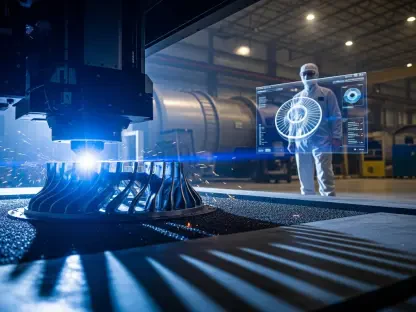Technological advancements have penetrated various industries, with construction being at the forefront of this wave of innovation. A significant contribution to this advancement is the AMIS Build Preparation Software, which emerged as a transformative tool, driving efficiency and precision in manufacturing and construction processes. As the complexity of construction projects increases, solutions like the AMIS software become crucial for achieving seamless executions. In this review, the evolution, unique features, and notable performance metrics of this technology will be examined, alongside its current capabilities and potential future developments.
Analyzing AMIS Software: Building Excellence
With technology continuously reshaping industry standards, understanding AMIS software’s core principles and components is essential. Developed to streamline the intricate processes associated with construction projects, this software emerged as a pivotal solution in the tech landscape. It offers holistic support, enabling companies to design, prepare, and execute construction projects with unparalleled precision. Ensuring a blend of innovation and practicality, AMIS has become relevant within an array of tech-driven strategies that optimize productivity and resource management.
Key Attributes of AMIS Software
Automated Workflow Enhancements
Automation represents a cornerstone of AMIS software, revolutionizing traditional methodologies and enhancing overall efficiency. This technology integrates intelligent systems that effectively manage workflows, reducing human error and increasing the speed of operations. Through its advanced algorithms, the software ensures detailed oversight—from project planning to completion—streamlining processes and enabling consistently high-quality outputs. This feature significantly optimizes resource allocation, leading to substantial cost savings.
User Experience Design
AMIS Build Preparation Software prides itself on delivering an intuitive user interface that simplifies complex tasks. This design ensures users can navigate the system effortlessly, minimizing training requirements and enhancing interaction. The user-friendly components are crafted with consideration for the end-user’s needs, facilitating seamless integration into existing workflows. By prioritizing usability, AMIS advances efficiency, improving both user satisfaction and operational productivity. This focus on user-centric design offers a competitive edge, positioning the software as a preferred choice among industry professionals.
Advancements in AMIS Technology
Recent developments within AMIS software have pivoted toward incorporating cutting-edge innovations that further elevate its capabilities. The integration of machine learning algorithms and IoT features stands out as transformative, enabling a more dynamic response to industry demands and consumer expectations. These advancements are in line with modern technological trends that emphasize data-driven solutions for enhancing reliability and adaptability. As market behavior shifts, AMIS software remains a visionary in expanding its functionalities to meet evolving standards.
Practical Uses of AMIS Build Preparation Software
Real-world applications of AMIS software are vast and varied, impacting multiple sectors. Widely deployed across construction and manufacturing industries, its use cases demonstrate the tangible benefits of adopting this technology. Prominent among these are its applications in large-scale construction projects where precision is critical. AMIS enables sector professionals to overcome logistical challenges, maintaining project timelines and ensuring quality control. The software is also instrumental in prefabricated building processes, providing accuracy and consistency that elevate project outcomes considerably.
Navigating the Challenges of AMIS Software
While AMIS Build Preparation Software boasts significant advantages, it is not without challenges. Technical limitations must be addressed, including calibration complexities and integration hurdles stemming from diverse project requirements. Regulations governing construction software impose further obstacles, necessitating compliance and adaptation of software functionalities. Despite these challenges, developers are prioritizing solutions that address these barriers, fostering wider adoption and enhancing operational performance.
Prognosis for AMIS Build Preparation Technology
Looking ahead, the prospects for AMIS software indicate continued evolution and potential breakthroughs. Technological forecasts suggest the development of increasingly sophisticated features that augment industry protocols and redefine construction methodologies. In preparation for future challenges, ongoing research and innovation will drive the software’s growth, signaling long-term impacts in enhancing industrial processes and productivity. With anticipated advancements, this technology is positioned to increasingly shape construction landscapes through cutting-edge solutions.
Assessment and Conclusions
In conclusion, AMIS Build Preparation Software sets a benchmark in the integration of technology with construction practices. It has shown immense potential in transforming workflow efficiencies, optimizing resource allocation, and driving productivity across sectors. The software’s advanced features, from automation to user-friendly interfaces, have helped reposition industry standards, showing significant adaptability to evolving market needs. Recognizing its challenges, AMIS aims to transcend existing limitations with continued development, underscoring its commitment to innovation. Its contributions to reimagining construction methods have established it as a pivotal element in modern build preparation, directing the industry toward a future ripe with possibilities.









